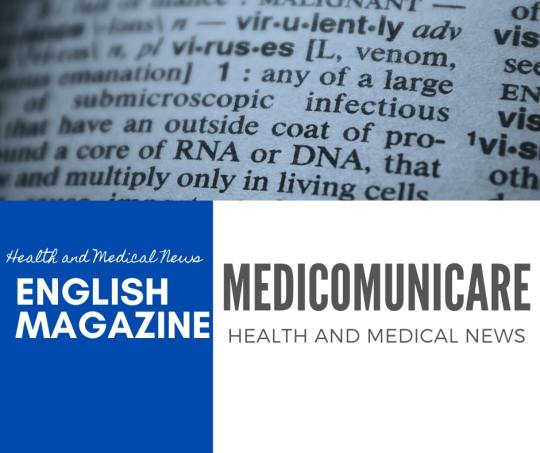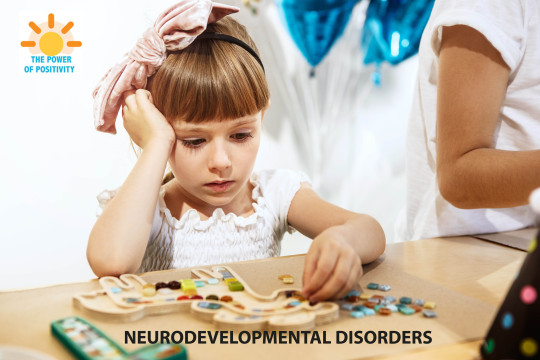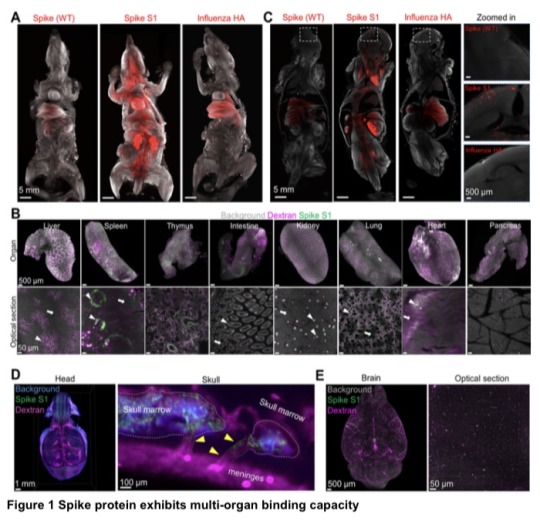#neurodegeneration
Text
A new study on mice suggests the cause of Alzheimer's disease may not be the buildup of beta-amyloid clumps in the brain but rather breaks in the connections (synapses) between brain cells.
By manipulating the natural processes of RNA editing in mice modelled to reflect Alzheimer's symptoms, researchers prevented the connections in their brains from breaking down. Memory was restored without removing the protein clumps that are thought to cause the disease, suggesting damage between neurons was a critical problem.
The finding provides a new understanding of Alzheimer's disease and an approach that could potentially address memory loss in Alzheimer's patients.
Continue Reading.
107 notes
·
View notes
Text

Needed for Nerves
Disrupting the protein complex COPI which is involved in protein transport inside nerve cells, causes neurodegeneration – revealing its essential role in maintaining nerve axonsRead the published paper here
Image from work by Daniel C. Maddison and colleagues
UK Dementia Research Institute, School of Medicine, Cardiff University, Cardiff, UK
Image originally published with a Creative Commons Attribution 4.0 International (CC BY 4.0)
Published in Cell Reports, July 2023
You can also follow BPoD on Instagram, Twitter and Facebook
17 notes
·
View notes
Text
Loosing a parent to a neurodegenerative disorder feels like watching them die over months and years.
We're almost 7 years in at this point. I'm still shocked every time there is a noticeable loss of function. I should be used to it by now but I'm not.
I still get frustrated and angry. With the situation, not with them. But at the end it's my parent I lash out against.
I'm still so sad and lost. It's been almost a year in therapy, I found my ways to grieve now and have plans how to grieve after they're gone. But I still cry myself to sleep sometimes.
#neurodegenerative diseases#neurodegeneration#child of a dying parent#grief#loss#loss of a parent#chronic illness#terminal illness#therapy can only do so much i have to scream into the void
2 notes
·
View notes
Text
I think a lot of people forget that Sara is under the spectrum. And everyone is different, but Sara reminds me of my best friend who is also autistic, and he doesn't see people as bad... he knows that there's "bad people" but doesn't truly see or believes that a person that did something bad doesn't feel sorry or doesn't care. To my best friend people are good even when they do bad things constantly (this causes me lots of stress) ...
And I think it could be like this in Sara's case... specially, because August looks like he is sorry; he's stressed, under pressure, anxious, and more.... he behaves like he regrets his actions, basically.

This is not an excuse… it's just a reminder
The things she does or say aren't meant to hurt people… they're just facts… like when she speaks about money, it's not to hurt her mom or Simon, it's a simple fact.
spoiler
When it's her birthday and Simon gives her the pants and she tells him her friends gave her more expensive pants (it's not to humiliate him, she's just saying it) and when she notices it, she immediately goes with "maybe we can return it and get the money back"
#young royals#young royals season 2#sara young royals#neurodegeneration#adhd#autism#august young royals#sara & august#sara eriksson#simon eriksson
28 notes
·
View notes
Text
Alzheimer's Disease: biomarkers and neuroimaging markers cheatsheet for research articles
As Alzheimer's Disease (AD) research skews toward understanding the brain than the pathogenic proteins, studies exploring biomarkers and neuroimaging are hopeful toward developing a method for successful prevention of AD. A biomarker is a molecule, whose presence indicates abnormality or disease, and thus, is crucial in diagnostic procedures. Levels of certain molecules is notably altered in cerebrospinal fluid and in blood plasma, which helps in diagnosing the occurrence of AD. Neuroimaging involves the use of techniques such as magnetic resonance imaging and computed tomography to observe neuronal activity in the brain. This is good news, especially for AD, as the asymptomatic stage of the disease can be identified early enough.
Although the exact function and involvement in clinical practice is not profuse, altered concentrations of these biomarkers in plasma or cerebrospinal fluid encourage further research:
Amyloid and tau serve as the unsurprising biomarkers of AD pathology.
Neurofilament-light chain (NF-L) and visinin-like protein-1 (VILIP-1) are the most promising biomarkers of neuronal injury.
Post-synaptic protein neurogranin (Ng) and pre-synaptic proteins synaptosome-associated protein-25 (SNAP-25) and synaptotagmin-1 (Syt-1) are considered major biomarkers of synaptic injury.
Brain and CSF levels of tumor necrosis factor alpha (TNF-α) and increased levels of interleukin group of proteins (ILs) indicate intensified microglial response to neuroinflammation.
TREM2 receptor and YKL-40 glycoprotein are also reliable indicators of inflammation and impaired clearance of amyloid beta.
Heart-type fatty acid-binding protein (hFABP) could be a marker for pathology in blood vessels supplying the brain. Some vascular markers also show potential as markers of vascular injury in AD: von Willebrand factor (vWF) and monokine induced by γ-interferon (MIG, also known as CXCL-9).
Concentrations of TAR-DNA binding protein (TDP-43) in the brain and plasma and serum indicate, even contribute to, inflammation, mitochondrial dysfunction, and neuronal/synaptic injury in AD.
Neuroimaging techniques reveal structural, functional, and diffusion-related activities of the neurons. To identify them, markers are tracked in images obtained. Each marker is determined with the activity and biochemistry of the group of/individual neurons being studied.
Structural MRI will show location and severity of atrophy which can be identified in grey scale images by applying programs that create analogous color grading.
Functional MRI relies on blood oxygenation level dependent (BOLD) signal which reflects changes in blood oxygenation levels in response to neural activity.
Diffusion weighted imaging (DWI) focuses on diffusion of water molecules. A tensor model is applied to images obtained from DWI. The diffusion tensor imaging (DTI) metrics thus obtained help in studying connectivity through structural integrity of white matter tracts.
Tractography involves 3-D reconstruction of white matter as observed in DWI, which provides a more detailed look into a patient’s neural networks.
In positron emission tomography (PET), markers are identified and labelled so their features or functions can be traced during this procedure to obtain a resulting PET scan. The imaging procedure is named according to its marker: amyloid-PET, tau-PET, FDG-PET, inflammation-PET, receptor-PET.
FDA approved drugs Galantamine, Rivastigmine, and Donepezil alleviate symptoms such as memory loss and confusion in mild to moderate AD, although their effects seem to be negligible. They also cause nausea and vomiting as side effects and are not suitable for every patient. Recently approved drugs, Aducanumab and Lecanemab focus on removing accumulated amyloid. Their effectiveness is still doubted on the basis of studies finding that targeting amyloid has little to do with curbing the actual progression of the disease.
bibliography -
Tarawneh R. Biomarkers: our path towards a cure for Alzheimer disease. Biomarker insights. 2020 Nov;15:1177271920976367.
Cavedo E, Lista S, Khachaturian Z, Aisen P, Amouyel P, Herholz K, Jack Jr CR, Sperling R, Cummings J, Blennow K, O’Bryant S. The road ahead to cure Alzheimer’s disease: development of biological markers and neuroimaging methods for prevention trials across all stages and target populations. The journal of prevention of Alzheimer's disease. 2014 Dec;1(3):181.
Medications for Alzheimer's Disease Stanford Healthcare. Accessed 21-04-2023.
#aging#alzheimers#dementia#neuroscience#clinical medicine#diagnostics#diagnosis#brain injuries#neurological conditions#neurodegenerative disorders#neurodegeneration#neurons#neurology#brain research#neurological disease#neurological disorders and injuries#chronic illness#neuroinflammation#neuroimaging#science#science side of tumblr#research paper#academic writing
6 notes
·
View notes
Text
BRAIN DAMAGE
starvation > lead > radio/tv > processed foods > internet/cellular
1 note
·
View note
Text
Cellular fate and energy factories: unraveling how surface receptors meet mitochondria for brain cell survival
The human brain is an organ that takes nearly from 20 to 25% of the energy the body needs. This high energy demand for neuronal functions depends on the transport and precise distribution of mitochondria — the energy-generating cell organelles — in each neuron. In neurons, the transport process of mitochondria is determining, since these organelles must be present along all axons and dendrites to…

View On WordPress
#beta-amyloid#cell receptors#cognitive decline#endoplasmic reticulum#epilepsy#G protein#mitochondria#neurodegeneration#sistema immunitario#tau protein
0 notes
Text
Researchers reveal full structure of ‘ancient genetic parasite’
In the study, an international multidisciplinary team reported the first high-resolution images and structural details of a genetic element known as LINE-1 , which inserts itself into the human genome and is implicated in diseases such as cancer, autoimmune disorders and neurodegeneration, and even aging. The work provides a target for potential new treatments moving forward.
LINE-1 is described as an “ancient genetic parasite” with about 100 potentially active copies in each person. LINE-1 activity is often correlated with disease. Unlike DNA, which makes RNA and then proteins, retrotransposons like LINE-1 work backwards, making DNA from RNA and then inserting it into the genome.
0 notes
Text
What is the most common neurodevelopmental disorder ?
Click here to go to the main article : https://bit.ly/47Ih0Bo

Neurodevelopmental disorders encompass a range of conditions that affect the brain's development, impacting a person's behavior, cognition, and social interactions. Understanding the nuances of these disorders is crucial for fostering inclusivity and support in our communities.
1 note
·
View note
Text
Die Studie identifiziert ein Tiermodell, das viele Ähnlichkeiten mit progressiver MS aufweist
Eine neue Studie von UCLA-Forschern identifizierte ein Tiermodell, das verwendet werden könnte, um Behandlungen zur Verbesserung von Behinderungen bei Multiple-Sklerose-Patienten zu untersuchen.
Hintergrund
Multiple Sklerose (MS) ist eine Autoimmun- und neurodegenerative Erkrankung, bei der das Immunsystem Nerven im Gehirn und Rückenmark angreift. Es gibt zahlreiche Behandlungen, die auf Immunmechanismen abzielen und MS-Schübe reduzieren, aber keine ist darauf aus...
#Antiphlogistikum #Behinderung #BLUT #chronisch #Entzündung #Enzephalomyelitis #Forschung #gehen #Gehirn #Immunsystem #Kortex #Mausmodell #Multiple_Sklerose #Nerv #Neurodegeneration #Neurodegenerative_Erkrankung #Neurologie #Neurowissenschaft #OKT #Sklerose #Tiermodell
#Medical_Condition_News#Medical_Research_News#Medical_Science_News#News#Antiphlogistikum#Behinderung#BLUT#chronisch#Entzündung#Enzephalomyelitis#Forschung#gehen#Gehirn#Immunsystem#Kortex#Mausmodell#Multiple_Sklerose#Nerv#Neurodegeneration#Neurodegenerative_Erkrankung#Neurologie#Neurowissenschaft#OKT#Sklerose#Tiermodell
0 notes
Link
We all know that COVID-19 can lead to lingering fatigue and brain fog. But one of the most rigorous examinations to date of the long-term cognitive impacts of severe infection has just yielded some pretty unsettling results.
In a study comparing 46 severe COVID-19 patients with 460 matched controls, researchers found the mental impacts of severe COVID-19 six months later can be the equivalent to aging 20 years – going from 50 to 70 years old – or losing 10 IQ points.
The specific mental changes were also distinct to those seen in early dementia or general aging.
"Cognitive impairment is common to a wide range of neurological disorders, including dementia, and even routine aging, but the patterns we saw – the cognitive 'fingerprint' of COVID-19 – was distinct from all of these," says neuroscientist David Menon from the University of Cambridge in the UK, who was senior author of the study.
Continue Reading.
1K notes
·
View notes
Photo

Clear a Path
To lift your finger and click on this page, messages must fly between your brain and muscles to coordinate the movement. Signals travel along a vast network of neurons, but how each neuron develops in just the right place is not well understood. Researchers have previously interrogated genetic activity within the nervous system during growth, but a recent study broadened the approach, testing the impact of genetic mutations in other parts of the body as well. They discovered that mutations affecting the vascular system hampered neuron development. If blood vessels – essential for providing neurons with fuel to grow – lacked a particular receptor, they failed to make space for growing neurons (right, in green neurons blocked by red blood vessels compared to healthy mice, left, with neurons reaching cleanly towards muscles). This could have implications for many conditions linked to motor neurons, such as ALS, and treatment approaches focused on growing new neurons to replace damaged ones.
Written by Anthony Lewis
Image from work by Luis F. Martins and colleagues
San Raffaele Scientific Institute, Division of Neuroscience, Milan, Italy & Salk Institute for Biological Studies, La Jolla, CA, USA
Image copyright held by the original authors
Research published in Neuron, October 2022
You can also follow BPoD on Instagram, Twitter and Facebook
#science#biomedicine#neuroscience#blood vessels#vascular#motor neurons#immunofluorescence#als#neurodegeneration
15 notes
·
View notes
Text


4 notes
·
View notes
Text
Human spinal cord cell atlas provides foundation to study neurodegeneration, chronic pain, and other diseases.
What
New research offers clues about the biology of cells in the spinal cord that die off in amyotrophic lateral sclerosis (ALS) and other neurodegenerative diseases. A team of researchers supported by the National Institutes of Health found evidence linking motor neurons’ large cell size and supporting structure with the genes that underlie their vulnerability to degeneration in ALS. Findings…

View On WordPress
0 notes
Link
Abstract
Amyloid-β (Ab), tau, and apolipoprotein E (APOE) are major players in the pathogenesis of Alzheimer’s disease (AD), which involves neuroinflammation and neurodegeneration (1). Recently, gut mi crobes have emerged as an important factor implicated in neurodegeneration (2). However, how gu t microbes interplay with APOE and tau remains elusive. On page 155 of this issue, Seo et al. (3) investigate tau-mediated neurodegeneration using mouse models in which animals were raised conventionally and in germ-free (GF, lacking all microbiota) conditions. They demonstrate that gut bacteria play a causative role in tau-mediated neurodegeneration through modulation of inflammation in the periphery and the central nervous system (CNS). This neuroinflammation arose in an APOE isoform–dependent and sex-specific manner.
0 notes